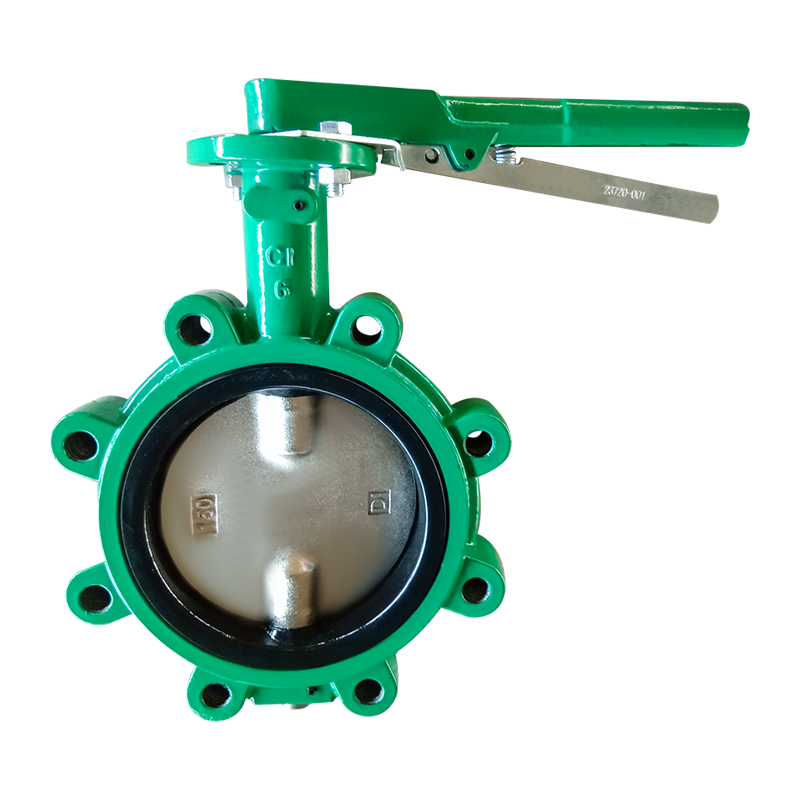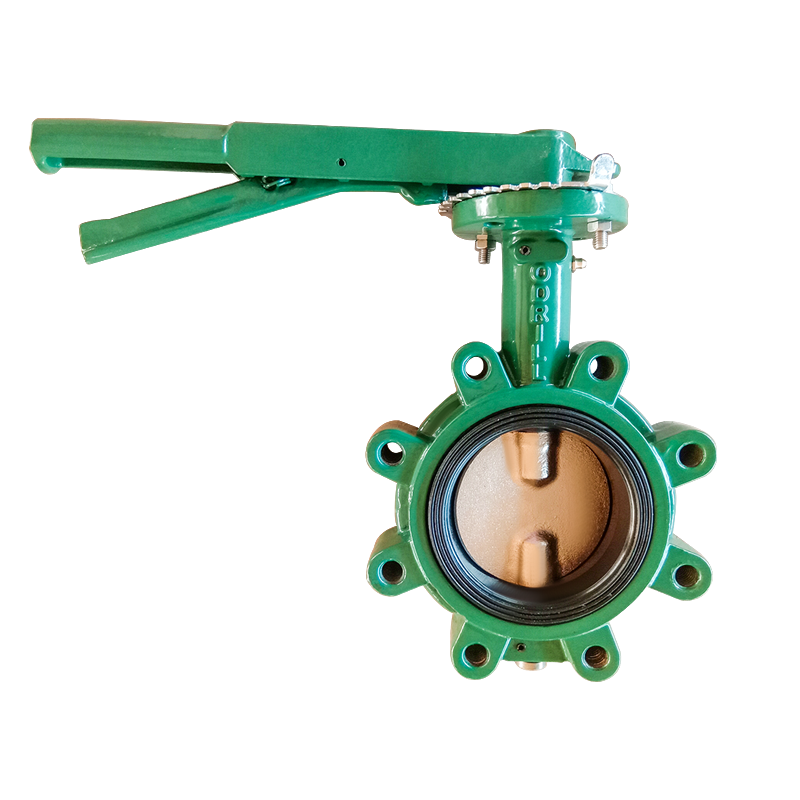
- Call Us
- +8618633052223
- njhdvlz@163.com
Aug . 04, 2025 03:40 Back to list
Premium 2.5 Inch Butterfly Valve with GPT-4 Turbo
The demand for butterfly valve 2.5 inch and its related series (such as butterfly valve 2 1 2 inch, butterfly valve 1.5 inch, butterfly valve 1 1 2 inch, 1.5 tri clamp butterfly valve) is on a steady rise, driven by advances in automated process industries, water infrastructure upgrades, and stricter safety and corrosion standards.
According to MarketsandMarkets, the global butterfly valve market is projected to reach $13.6 billion by 2027, up from $9.0 billion in 2022—a CAGR of 8.6%. Industry sectors like oil & gas, chemical, food & beverage, and water treatment are major adopters, drawn by reliability, space-saving design, and cost performance.
| Size | Connection | Body Material | Disc Material | Seat Material | Pressure (Max) | Operating Temp | Standard |
|---|---|---|---|---|---|---|---|
| 2.5 inch (DN65) | Lug, Flange, Wafer | CF8M (SS316), WCB, Ductile Iron | CF8/CF8M, Duplex SS | EPDM, PTFE, NBR | 16 bar (232 psi) | -20°C~180°C | ISO 5752/ANSI/API |
| 2 1/2 inch | Tri-Clamp, Lug | Stainless Steel | Stainless Steel | PTFE, FKM | 10~20 bar | -30°C~180°C | FDA/ISO |
| 1.5 inch | Tri-Clamp | 304/316L Stainless Steel | CF8, CF8M | EPDM, PTFE | 8 bar (116 psi) | -10°C~130°C | 3A / FDA / ISO |
| 1 1/2 inch | Tri-Clamp | 316 Stainless Steel | 316L SS | PTFE | 10 bar | -25°C~180°C | FDA, ISO 9001 |
| 1.5 Tri Clamp | Tri-Clamp | SS304/SS316 | SS304/SS316 | PTFE, EPDM | 8~16 bar | -20°C~120°C | 3A / ISO |

- Compact Construction: The butterfly valve 2.5 inch is recognized for its slim body, allowing installation even in restricted piping systems without sacrificing performance.
- Advanced Materials: Widespread adoption of high-alloy stainless steel (CF8M, CF8, Duplex) and advanced seat materials (like PTFE and FKM) ensure long-lasting corrosion resistance, critical for chemical and water treatment applications.
- Optimized Flow Control: The disc design ensures minimal pressure drop and reliable sealing, exceeding ANSI/ISO leakage standards.
- Versatility: Tri-clamp options address sanitary needs (pharma, food), while lug/flange types fit heavy industrial pipelines.
- Gentle Actuation: Manual, pneumatic, or electric actuators can be fitted—offering flexibility from shut-off to precise control.
- Certification: All reputable manufacturers comply with ISO 9001, CE, and FDA standards for traceability and safety.
- Raw Materials: Strictly SS316L (for body, disc) certified per ASTM/AISI.
- Seat Material: PTFE or EPDM, FDA & ISO 10993 tested.
- Surface Quality: Mirror finish Ra < 0.8µm for sanitary designs.
- Testing: 100% hydrostatic and seat leak ANSI Class VI leak test.
- Traceability: Every valve marked with unique batch/serial & certification.

The Long Neck Lug Type Model 30 Butterfly Valve exemplifies state-of-the-art butterfly valve engineering for 2.5 inch pipelines and above. Its features offer clear distinction versus competing products in technical and operational areas.
| Model 30 (Long Neck Lug) | Standard Wafer Type | Tri-Clamp Type | |
|---|---|---|---|
| Size Range | 2.5"–12" | 2"–10" | 1.5"–4" |
| Materials | CF8M/CF8, Ductile Iron | WCB, SS316 | SS304/316L |
| Seat | EPDM/PTFE/Viton | EPDM/NBR | EPDM/PTFE/FDA |
| Pressure (Max) | 16 bar | 10 bar | 8 bar |
| Applicable Standard | ISO, ANSI, API609 | ISO, API609 | ISO, FDA |
| Neck Extension | Long (30mm+ insulation clearance) | Short/None | Short |
| Industrial Use | Oil, Chem, HVAC, Water, Pulp/Paper | Water, HVAC | Food, Beverage |
| Lifecycle Test | > 50,000 cycles | 15,000 cycles | 10,000 cycles |
- Extended Neck Design: Enables insulation on pipelines and outdoor/harsh service.
- Full Compliance: Supported by test certificates to ISO 5208 leakage, EN593, PED, API609.
- Ultra-low Leakage: Factory test records show leakage rates far below ANSI FCI70-2 Class VI (see line chart above).
- Service Life: Lifecycle test > 50,000 full cycles under full pressure—well above industry average.
- Adaptability: Can be custom-fit with pneumatic actuators, modulating controls, limit switches for process integration.
- Trustworthy Manufacture: Produced by a manufacturer with 20+ years experience, ISO 9001/14001 audits, and OEM for top-5 global valve brands.
- Water Supply & Treatment: Butterfly valve 2.5 inch is ideal for main and branch pipelines, tank isolation, and automated dosing systems.
- Oil & Gas Pipelines: Used for discharge, mixing, and rapid shut-off, thanks to high-pressure and anti-sulfide disc materials.
- Pharmaceutical/Beverage Pipeline: Tri-clamp butterfly valves ensure product purity and sterilization, per 3A/FDA standards.
- HVAC & Fire Systems: Automates isolation and modulating air or warm/cool water for commercial buildings.
- Metallurgy & Mining: Resists abrasive and corrosive slurry due to robust disc-seat design.
Customer Case: A leading Singapore water utility implemented over 400 units of butterfly valve 2.5 inch in a 2022 major line expansion. On-the-ground data showed average cycle times increased valve lifespan by 42% compared to competing wafer types, and leakage incidents dropped by >90% after one year of running.
“We chose Model 30 for its impeccable seat resilience and insulation capability—even after multiple sterilization cycles. The fast local support from Hongda was critical in startup success.”
— Process Engineering Manager, Utility Sector (2023)
- Customization: Available in varied body/disc/seat materials (per ISO/ASTM codes), automated actuation, insulation kits, and tag engraving for plant asset management.
- Lead Time: Standard sizes (2 1/2") ship within 10–18 days; special alloys or full automation: 3–5 weeks.
- After-sales: 24/7 technical hotline, remote commissioning support, 18-month warranty with optional long-term frame supply.
- Certificates: All orders delivered with ISO material pedigree, hydrotest report, and ATEX certificate if applicable.
- ISO 9001/14001: Full quality & environmental management system, annual audit compliance.
- EN 593/API 609: Design, torque, performance, and construction references.
- Collaboration: Manufacturer supplies to global EPC contractors, water utilities, and process OEMs in over 40 countries with service references available.
- Third-Party Test Labs: SITIIAS, TÜV NORD, SGS, CSS—used for random samples each quarter.
The butterfly valve 2.5 inch market is defined by the need for robust, reliable, and adaptable valves. The Long Neck Lug Type Model 30 delivers exceptional performance in every metric—superior lifecycle, global standards compliance, and field-tested reliability. Real-world applications across water, petrochemical, HVAC, and food processing underline its ROI and resilience, with world-class aftersales support.
“Performance Testing of Butterfly Valves According to ISO 5208 & ANSI FCI 70-2” – Valve World Magazine, Vol. 22, 2022
“Butterfly Valve Selection for Modern Water Treatment Plants” – Eng-Tips Engineering Forum
-
Premium 2.5 Inch Butterfly Valve with GPT-4 Turbo
NewsAug.04,2025
-
Compact Double Flanged Short Pattern Butterfly Valve | High Efficiency
NewsAug.03,2025
-
Stainless Steel Sanitary Butterfly Valve | Hygienic & Durable
NewsAug.02,2025
-
Double Flanged Short Pattern Butterfly Valve | Compact, Efficient Flow
NewsAug.01,2025
-
Precise 3-Inch Butterfly Valve Dimensions | Durable Flow
NewsJul.31,2025
-
3 Butterfly Valve Dimensions | GPT-4 Turbo Precision Specs
NewsJul.31,2025